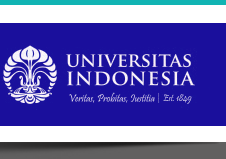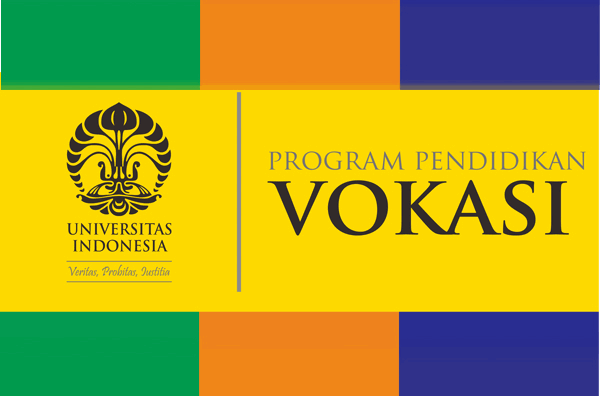Jurnal Fisioterapi Terapan Indonesia
Abstract
Bronchiectasis is a major chronic disease characterized by infection, inflammation, and permanent dilation of the bronchial walls. Interaction of chronic infection, exacerbation, and inflammation resulting in lung injury. Patients with bronchiectasis have several clinical manifestations of primary bronchiectasis, which is the occurrence of recurrent, chronic infections. In patients with bronchiectasis, mechanical efficiency of breathing leads to decreased rib movement and increased abdominal movement leading to a paradoxical breathing pattern. Treatment goals include achieving symptom control, preventing or reducing exacerbations. Various alternative airway techniques have been used in the physiotherapeutic management of patients with bronchiectasis. Techniques are considered the way to be considered an integral component of management. The breathing technique consists of an intermediary that regulates breathing control, hard expansion exercises. ACBT (Active Cycle Breathing Technique) is an intervention that aims to improve the condition of the chest wall. ACBT has a significant effect on the rate of chest expansion. So that these interventions can increase chest expansion and can reduce fatigue in taking a breath.. The therapist does not huff because the patient can cough effectively. In addition to increasing chest expansion, the effectiveness of ACBT is also useful for reducing shortness of breath, reducing phlegm, and exacerbations. Appropriate ACBT can also exacerbation of symptoms and reduce patient morbidity and mortality. Because of its effectiveness, it is preferred by the patient and if the cost is really enjoyed by the patient, it can be done at home. Other airway treatments have also shown benefit for the treatment of bronchiectasis, but ACBT shows a great effect on symptoms.1 ACBT has a significant effect in improving airways and improving lung function in bronchiectasis, but ACBT has a better effect on improving airways.
References
Elsayed SH, Kamal W, Abdel M, Fathy KA. Impact of Aactivity Cycle of Breathing Technique on Functional Capacity In Patient With Bronchiectasis. 2015;(October). 2. WHO. Tubuh tembakau. 2019;7000. 3. American Lung Association. Learn About Tuberculosis. 2018; Available from: https://www.lung.org/lung-health-and-disease s/lung-disease-lookup/tuberculosis/learn-abo ut-tuberculosis.html 4. Chandrasekaran R, Aogáin M Mac, Chalmers JD, Elborn SJ, Chotirmall SH. Geographic variation in the aetiology , epidemiology and microbiology of bronchiectasis. 2018;1–14. 5. Respirasi J. Jurnal respirasi. 2016;2(2):52–60. 6. Physiopedia. Bronchiectasis. 2020. 7. Mulay SU, Devi TP, Jagtap VK. Effectiveness of Shoulder and Thoracic Mobility Exercise On Chest Expansion and Dyspnea In Moderate Chronic Obstructive Pulmonary Disease Patients. 2017;5(2):1960–5. 8. Hunter RL. The Pathogenesis of Tuberculosis : The Early Infiltrate of Post-primary ( Adult Pulmonary ) Tuberculosis : A Distinct Disease Entity. 2018;9(September):1–9. 9. Reddy RS, Alahmari KA, Silvian PS, Ahmad IA, Kakarparthi VN, Rengaramanujam K. Reliability of Chest Wall Mobility and Its Correlation with Lung Functions in Healthy Nonsmokers , Healthy Smokers , and Patients with COPD. 2019;2019. 10. Lewis LK, Williams MT, Olds TS. The active cycle of breathing technique : A systematic review and meta-analysis. Respir Med [Internet]. 2012;106(2):155–72. Available from: http://dx.doi.org/10.1016/j.rmed.2011.10.014 11. Urme NA, Alam F, Rahman E. Clinical Respiratory Diseases and Care Effectiveness of Active Cycle of Breathing Technique ( ACBT ) for the Patients of Bronchiectasis : A Narrative Review Study. 2019;5(2):2–5.
Bahasa Abstract
Bronkiektasis adalah penyakit paru kronis utama yang ditandai oleh infeksi, peradangan, dan pelebaran permanen dari dinding bronkial yang permanen. Interaksi infeksi kronis, eksaserbasi, dan inflamasi yang mengakibatkan lung injury. Pasien dengan bronkiektasis mempunyai beberapa manifestasi klinis primer bronkiektasis adalah terjadinya infeksi yang berulang, kronis. Manifestasi seperti nyeri dada, mendengkur, clubbing finger, kelelahan, batuk terus-menerus, infeksi berulang, dan kehilangan nafsu makan. Pada pasien dengan bronkiektasis, efisiensi mekanik otot pernapasan menyebabkan penurunan gerakan tulang rusuk dan meningkatkan gerakan perut yang mengarah ke pola pernapasan paradoksal. Tujuan pengobatan termasuk mencapai kontrol gejala, mencegah atau mengurangi eksaserbasi. Teknik pernafasan aktif terdiri dari perantara yang mengatur kontrol pernapasan, latihan ekspansi toraks. ACBT (Active Cycle Breathing Technique) merupakan intervensi yang bertujuan untuk memperbaiki kondisi dinding dada. ACBT memiliki pengaruh yang signifikan pada nilai ekspansi dada. Sehingga intervensi tersebut dapat meningkatkan pengembangan dada dan dapat mengurangi kelelahan dalam pengambilan nafas. Banyak faktor juga yang dapat membuat ekspansi dada menurun, beberapa faktor diantaranya seperti sesak, tidak mengulang latihan yang telah di berikan, dan mood saat latihan juga berpengaruh. Terapis tidak melakukan huffing dikarenakan pasien dapat melakukan batuk efektif. Selain untuk peningkatan ekspansi dada efektifitas ACBT juga berguna untuk menurunkan sesak, pengurangan dahak dan meminimalkan eksaserbasi. Aplikasi ACBT yang tepat juga dapat meminimalkan eksaserbasi gejala dan menurunkan morbiditas dan mortalitas pasien. Perawatan jalan nafas lainnya juga menunjukkan manfaat untuk pengobatan pasien bronkiektasis, tetapi ACBT menunjukkan efek yang hebat pada gejala pasien.1 ACBT memiliki efek signifikan dalam pembersihan saluran udara dan meningkatkan fungsi paru pada bronkiektasis tetapi ACBT memiliki efek yang lebih baik dalam pembersihan jalan nafas.
Recommended Citation
Pahlawi, Riza; Pratama, Aditya Denny; Noviana, Mita; and Iskandar, Anastasia Viastuti
(2022)
"Efektifitas ACBT Dalam Meningkatkan Ekspansi Dada Pada Kasus Bronchiectasis : Studi Kasus,"
Jurnal Fisioterapi Terapan Indonesia: Vol. 1:
Iss.
1, Article 18.
DOI: 10.7454/jfti.v1i1.1032
Available at:
https://scholarhub.ui.ac.id/jfti/vol1/iss1/18







